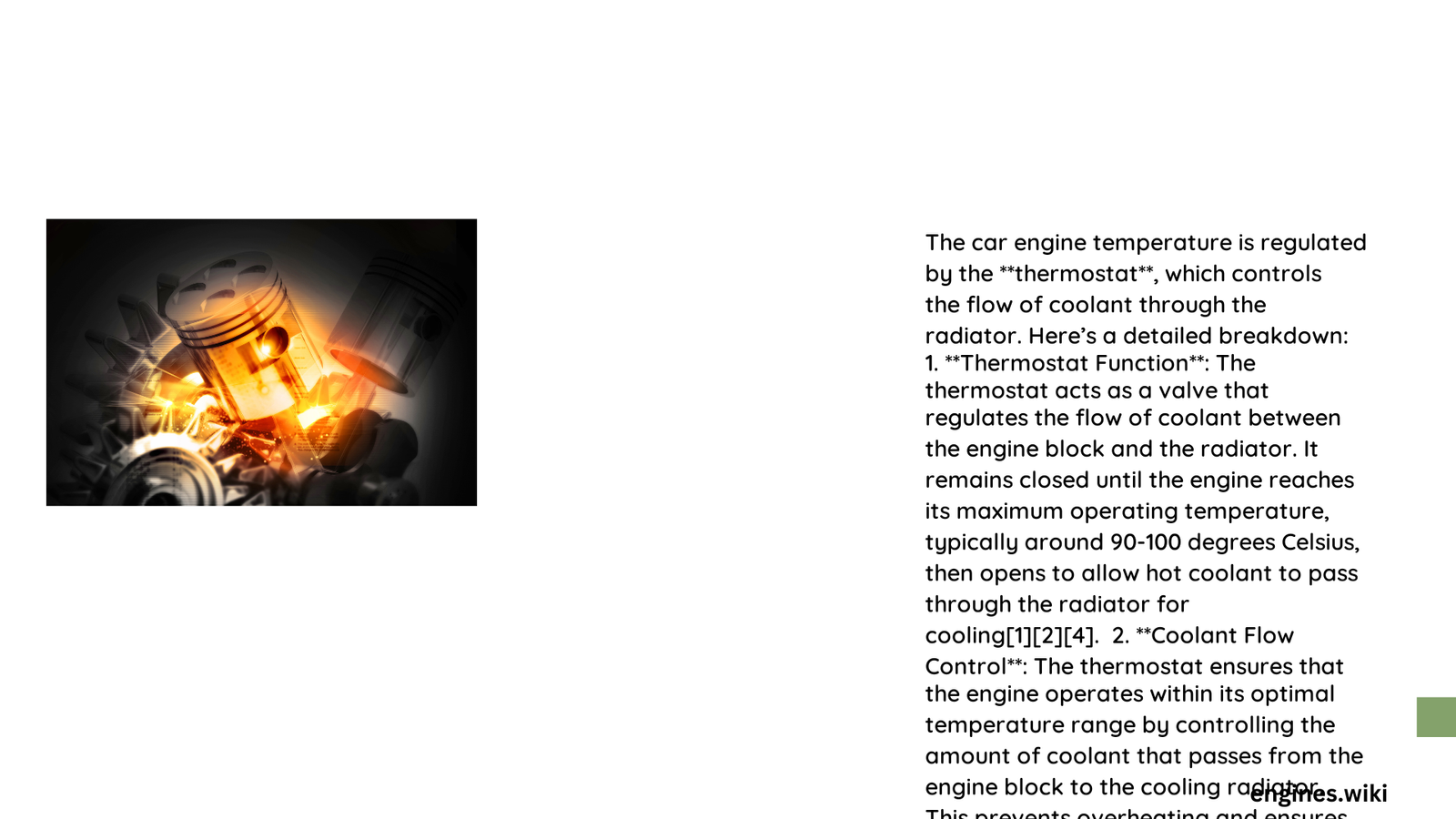Modern vehicle engines require precise temperature management to ensure optimal performance and prevent mechanical damage. The intricate system of temperature regulation involves multiple components working in synchronization, including thermostats, coolant systems, radiators, and advanced electronic sensors that continuously monitor and adjust engine heat levels to maintain peak operational efficiency.
What Controls Engine Temperature Fundamentals?
How Does the Thermostat Regulate Temperature?
The thermostat serves as the primary temperature control mechanism in a vehicle’s cooling system. Its sophisticated design allows it to manage coolant flow based on precise temperature thresholds:
- Temperature Activation Range:
- Closed position: Below 80-90°C
- Partially open: Between 90-95°C
- Fully open: At 95-105°C
| Thermostat State | Coolant Flow | Engine Temperature Impact |
|---|---|---|
| Closed | Restricted | Engine warming |
| Partially Open | Moderate | Temperature stabilization |
| Fully Open | Maximum | Heat dissipation |
What Mechanisms Prevent Overheating?
Several critical mechanisms work together to prevent engine overheating:
- Water Pump Circulation
- Continuously moves coolant through engine passages
- Ensures consistent heat distribution
-
Maintains uniform temperature across engine components
-
Radiator Heat Dissipation
- Transfers heat from coolant to surrounding air
- Uses aluminum or copper core for maximum thermal efficiency
- Equipped with cooling fans for additional temperature management
How Do Electronic Sensors Monitor Temperature?
Modern vehicles utilize advanced temperature monitoring systems:
- Thermistor Sensors
- High-precision temperature detection
- Provides real-time data to Engine Control Unit (ECU)
- Triggers cooling system adjustments within milliseconds
What Influences Coolant Performance?
Coolant composition plays a crucial role in temperature regulation:
- Ethylene Glycol Mixture
- Raises boiling point
- Prevents freezing in low temperatures
- Enhances heat transfer capabilities
Why Pressure Matters in Cooling Systems?
Cooling system pressure significantly impacts temperature regulation:
- Typical Pressure Range: 10-16 PSI
- Benefits:
- Increases coolant boiling point
- Reduces potential for vapor lock
- Improves overall system efficiency
Technical Considerations for Optimal Temperature Control

Factors Affecting Engine Temperature
- Engine design
- Ambient temperature
- Driving conditions
- Vehicle load
- Coolant quality
Potential Temperature Regulation Issues
Warning Signs of Temperature System Malfunction:
– Inconsistent temperature readings
– Frequent overheating
– Coolant leaks
– Unusual temperature fluctuations
Maintenance Recommendations
- Regular coolant system inspections
- Timely thermostat replacements
- Use manufacturer-recommended coolant
- Monitor temperature gauge consistently
Professional Diagnostic Approach
Automotive professionals recommend:
– Annual cooling system pressure tests
– Comprehensive thermostat functionality checks
– Coolant quality and concentration analysis
Conclusion
Understanding what regulates car engine temperature involves recognizing the complex interplay between mechanical and electronic systems. Proper maintenance and awareness of these intricate mechanisms ensure optimal vehicle performance and longevity.
